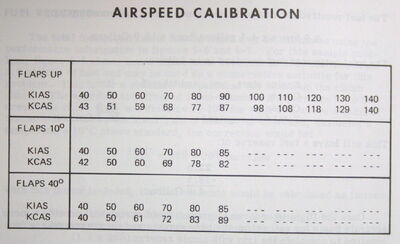True Air Speed[]
True Air Speed can be displayed by selecting 'No' for 'Indicated air speed' under the Interface tab of Game Options. It will then be shown in the HUD as 'SPD'.
TAS is useful for navigation as it accurately represents your true speed (relative to wind) and is corrected for effects of altitude. It can however be misleading, and IAS is more useful for maneuvers because it is the speed that is directly indicated by the aircraft ( the IAS "indicated airspeed").
Ground Speed It should be noted TAS isn't the same as Ground Speed as it's still an air speed, relative to the air the plane is travelling in. This means it's affected by the strength and direction of the wind.
- If there is no wind (relative to the direction of travel) TAS and GS are equivalent
- If in a tailwind, GS is the sum of TAS and wind speed
- If in a headwind, GS is the TAS minus wind speed
(Note that different types of planes have different speed don't fly a bomber near the ground you will never gain enough altitude)
IAS[]
Indicated Air Speed can be displayed by selecting 'Yes' for 'Indicated air speed' under the Interface tab of Game Options. It will then be shown in the HUD as 'IAS'.
Essentially IAS readings becomes lower with altitude because of the thinning of air at higher altitude.
How IAS is calculated[]
Air speed indicators work by having 2 probes (total pressure tubes also known as pitot tubes and a static port) on the aircraft. One pointing in the direction of travel (pitot tube) and one pointed sideways on the fuselage of the plane (static port). The static port measures the pressure of the atmosphere (called static pressure). When there's movement relative to air, dynamic pressure is added to the static pressure. The pitot tube pointing forwards measures total pressure,
Using the pressure difference between the two measuring points allows for measuring the dynamic pressure, alone. If you know the air density, you can calculate the air speed. This is where IAS and TAS differ.
At higher altitudes air gets thinner, this change in air density affects the IAS reading. IAS and TAS are identical at sea level and as you get higher due to the thinner air the IAS reading gets lower compared to TAS with altitude.
Why IAS is better for maneuvers[]
The Lift equation is , what you'll notice is that the dynamic pressure shown above is also a part of this lift equation. What this means is that although IAS is an incorrect air speed reading, it's still correct relative to the dynamic pressure, which affects lift in the same way as the air speed indicator.
Essentially what this means is that while a plane at 200 TAS at high altitude will not fly as well as a plane at 200 TAS at sea level due to the thinner air, a plane flying 200 IAS will fly the same at all altitudes since the lack of air density is corrected for by a higher speed if you maintain your IAS.
CAS[]
Calibrated Air Speed is IAS after correction for instrument error, the shape of the plane, location of the pitot tube and high speeds can affect the airflow resulting in flawed readings from the air speed indicator (position error). Since War Thunder isn't an aerodynamics simulator it can be assumed IAS readings shown are 'correct' CAS readings and no corrections are necessary.
Calibration tables are usually provided to pilots so they can convert from IAS to CAS as necessary depending on their wing configuration. This table is specific to each airplane.
(KIAS/CAS=IAS/CAS in knots)



